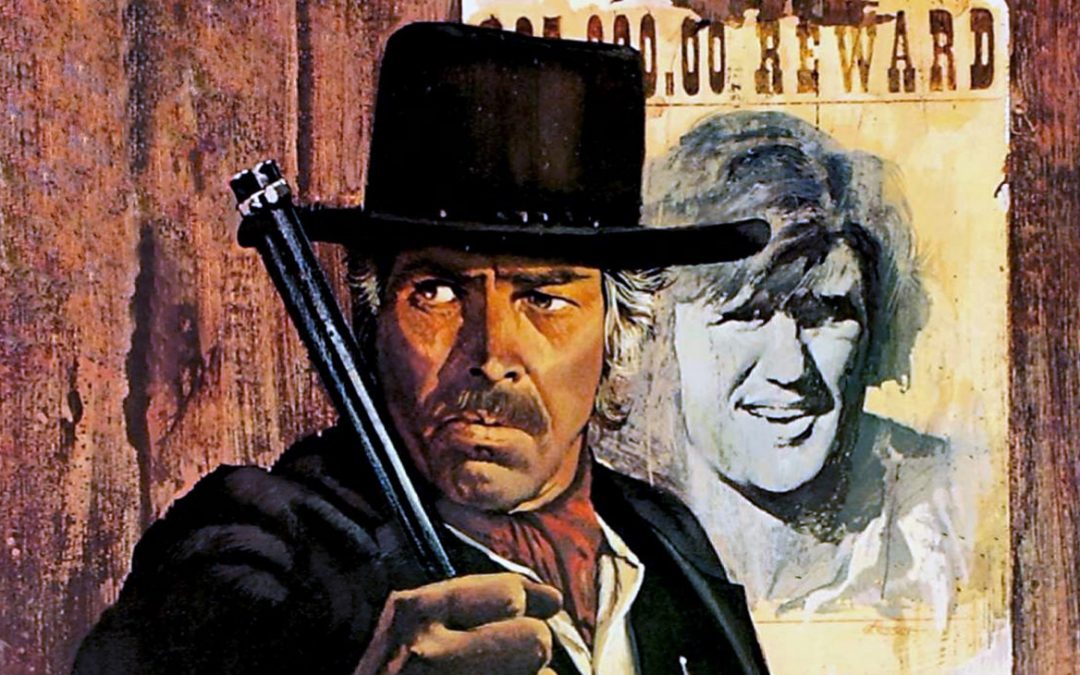Each Monday, I share reviews of Westerns I’m studying to prepare for making 12 Westerns in 12 Months during 2020. I am watching these films not from an audience perspective but as a filmmaker, as a student of the genre.
Week Nineteen: Pat Garrett and Billy the Kid & Track of the Cat
Pat Garrett and Billy the Kid
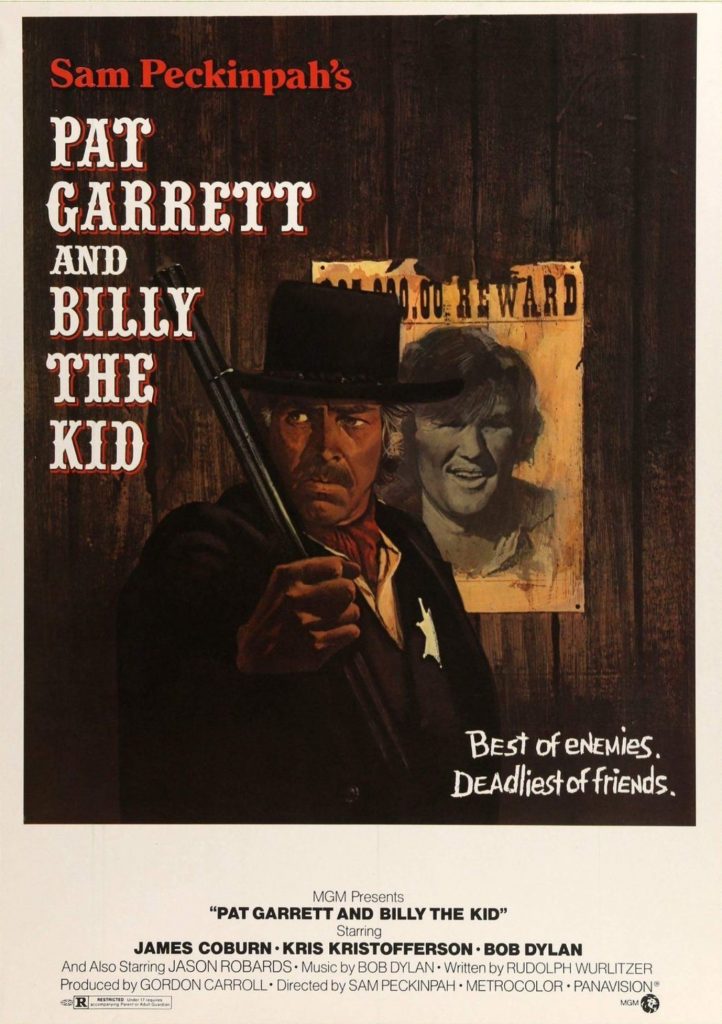
This might be my third time seeing Peckinpah’s violent ballad but it’s the first time I truly connected with the film. At this stage in my life and movie watching, I would call this Peckinpah’s best work, superior to Ride the High Country and even The Wild Bunch.
One of the key differences between this and that more recognized Western classic is the violence. In The Wild Bunch, the director seems to balance the horror and glory of death and killing all at once. A few years later, there is no glory at all in his depiction. On this watch, I felt this movie perfectly showed the futility of these gunfights, how pointless all this chasing and shooting each other really is. And of course, how quickly life comes to an end.
Take for instance, the whole episode with Slim Pickens. He’s just doing his own thing and then Pat Garrett comes along, recruits him for a small price, and off they go to chase one of the Kid’s gang. Is there really a point to any of this venture? The man has dreams. He wants to sail out of there on a boat. Moments later, he’s dying by a small basin of water, gut shot. And the way he went out wasn’t in the ultra-hero fashion we saw with Warren Oates and William Holden in The Wild Bunch. He shoots one “bad guy”, gets shot, falls, walks to the water, bleeds, his woman cries, and then he dies. It’s a scene that hurts to watch.
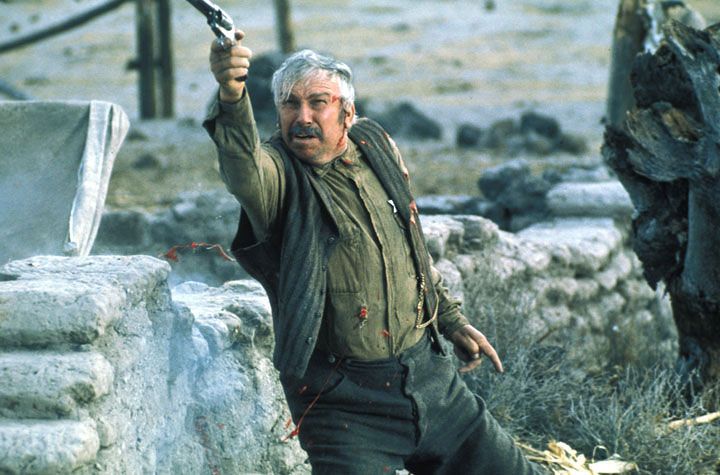
This continues brilliantly through the film with the smallest interactions: Pat Garrett and the river travelers almost killing each other over a misunderstanding, Garrett toying and torturing the men in the bar till one of them finally draws, and of course the final showdown, which of course is no showdown at all. The change in Peckinpah’s approach is helped by the lack of his usual slow motion techniques. He still uses it here and there but the film isn’t stylized like The Wild Bunch and Junior Bonner, returning to the simplicity he expressed with Ride the High Country. This makes the action all the more tragic and, of course, real. I find it interesting that Peckinpah worked with John Coquillon here instead of Lucien Ballard. I love the latter’s Western cinematography but it seems this might be the difference that elevates this picture to another level.
One more thing I understood on this viewing for the first time: it’s Garrett that leaves the gun for the Kid in the outhouse… I never caught this before which might sound stupid but I really didn’t get the picture till now. Garrett wants the Kid to get away but they both know he won’t. It’s just a “waitin’ around to die” situation, like a Townes Van Zandt song. His music would have been perfect for this if the film didn’t already have a perfect score, one of the best in any Western. And this time, I loved Dylan in the picture. His looseness and oddness plays to great effect. I particularly liked the body language of his performance, on display most in the scene where he throws the knife.
If you couldn’t tell, I love this movie. It’s now one of my favorite Westerns.
Seen on DVD.
Track of the Cat
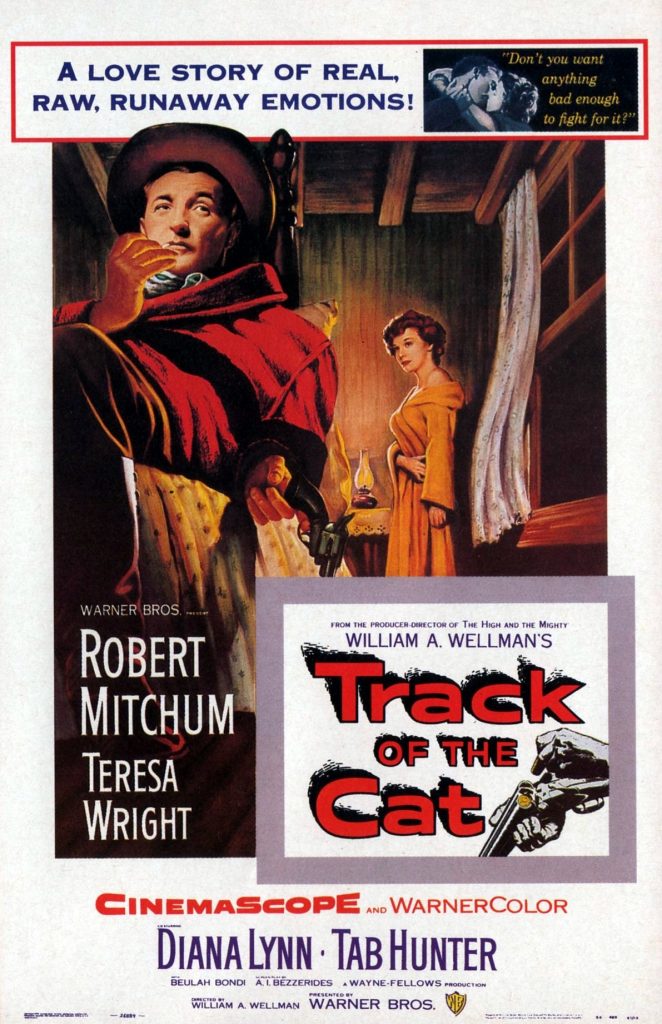
One word: odd. And for this viewer, this is not a successful kind of odd.
I’ll start by discussing the first 10 to 15 minutes of the film. I was surprised at how play-like the film immediately sets it up to be, not just in the one location setting but the whole feeling of the dialog and characters. Look at the portrayal of the Native American whose makeup and body language is cartoonish at best. Another example: what is the giggling of the women all about? It’s so fake, like it’s on an audio loop and it has nothing to do with the characters at all. Once we finally meet the women, they reveal no reason to have giggled for the rest of the film! It’s just a device, like the black and white and the panther… more on that later.
With the title “Track of the Cat“, you would think most of this film would take place outside doing just that. But no, a majority of the film plays out inside the house. It should have been retitled “Roam of the Home”. In theory, there’s nothing wrong with this but in practice, it doesn’t work. The characters and their actions are incredibly redundant. I was exhausted listening to them within those first fifteen minutes and dismayed to see the narrative return over and over to the same arguments. I hoped the panther would invade those white walls and eat them all.
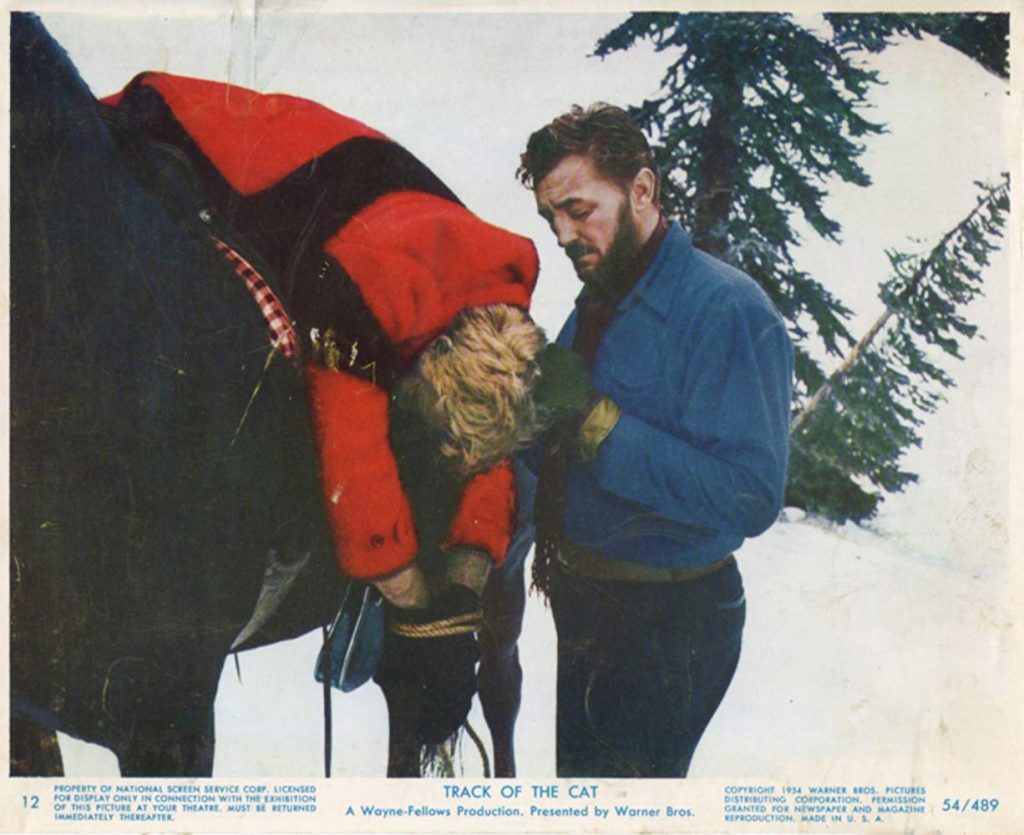
And as for the two most interesting elements of the movie (the hunt and the B&W gimmick), neither is accomplished to their full potential. I do believe it was Wellman’s mistake to not show some part of the panther. He admitted it might have been. The metaphor of the panther doesn’t work; the film wastes so much time on the soap opera drama to make the symbolism stick and therefore, the panther should have been shown, especially at the end. The black and white design is striking to look at but it’s spoiled by the red coat. Why is the B&W broken so early? And what does it mean? I could not figure out the importance of the red coat and why the use of evident color was not delayed for something more powerful like blood.
It is certainly a film that spurs discussion and you can probably tell it riled me up. However, I do not understand the affection for this film that I have heard from so many Western fans. I don’t know how Wellman, the director of such greats as Westward the Women, could have made this.
Seen on DVD.
Support our 12 Westerns project by donating five dollars or more on our GoFundMe fundraiser.
-Travis Mills

